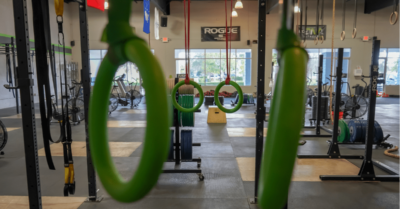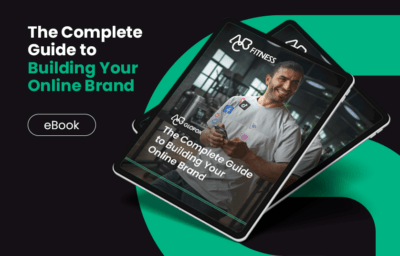In most businesses, the people are everything to do with your success. This is especially true for a small business. But finding great staff isn’t always easy. When you start a business and things are going well, you may find that you don’t have enough time to do it all by yourself. At this point, you start to think about hiring an employee for the first time and expanding your team. But when you have such a small team, as you do in a small business, a hiring decision can have a big impact on the overall business.
Hiring the right person can help you to avoid problems down the line. A bad hire will surely haunt you. By developing an effective recruiting process that allows you to find the best talent, make competitive offers, and streamline the hiring journey, you can avoid a bad hiring decision.
In this article, we try to understand what makes a great employee and how to nail down your hiring process to attract the right talent to your business.
Skip ahead to:
- Small business recruiting statistics you need to know
- What makes a good small business employee?
- Get ready for your first employee
- How to hire employees for your small business
Small business recruiting statistics you need to know
Most small business owners don’t have a ton of money and time to dedicate to recruiting. This means that sometimes it can be tempting to rush through the process at the last minute, especially when you’re experiencing understaffing issues. When the hiring process is rushed, often, you end up with people that aren’t the right fit for your business. In turn, this can lead to a higher employee turnover, which isn’t ideal.
By creating an effective recruiting process, you can streamline the hiring journey so that it works to your advantage. The recruitment process is as much about you selling yourself as it is a potential employee trying to impress you. It’s a two-way relationship with the top talent usually facing multiple offers from various businesses. Here are some small business recruiting statistics to keep in mind as you create your hiring process:
- In 2021, 51% of small businesses plan to hire new employees, with 63% of those predicting revenue growth.
- 80% of candidates said they are more likely to work a job with a flexible work option than one without.
- In terms of the hiring process, 83% of candidates say it would greatly improve the overall experience if employers provided a clear timeline.
- 65% of candidates stop the hiring process because of an unattractive employment value proposition (EVP).
A thoughtful hiring process takes into account both your needs and the needs of your potential employee. The purpose of a recruitment drive is to attract the right kind of talent so that you can expand your business and continue to grow. What’s great about developing an effective hiring process is that you can reuse it as you continue to expand. Although you will change the job description and interview questions, the general flow of the recruitment process will remain the same.
What makes a good small business employee?
HR departments and external recruiters tend to be too costly for small businesses. Most of the time, as a small business, you are the recruiter. This can be a great thing because it means you get the opportunity to spot great talent, connect with new employees, and really find someone who adds value to your business.
So, what makes a great small business employee?
Personality
For career success, personality matters. How well an employee’s personality fits with the overall business and the culture plays a big role in employee turnover and churn. Personality will affect if a person is seen as a leader and how well they are within the business. How someone thinks, feels, and behaves are all part of personality. While everyone is different and they can have unique personalities, it’s important to understand how personality in the workplace can move the company forward.
Attitude
Small businesses need people who are ambitious and can move with the company. As a small team, you are all on the same mission working towards a goal. The right attitude to the business and to the work is crucial in a great employee. A positive attitude can only help in the workplace to maintain motivation and drive at work. A good attitude also helps you to cope with the stressors of life and create a more productive work environment.
Experience and skills
Naturally, when you’re looking to fill a role, you’re hoping to find someone with certain experience and skills. You would list the required skills within the job description. Although an applicant’s skills and experience are considered first when screening through applicants, the reality is that you can learn skills, but you can’t change your personality. Finding a balance of experience, skills, and personality is important during the hiring process. While some roles will need a certain level of experience, you may be able to offer on-the-job training for other positions.
Get ready for your first employee
Before you hire your first employee, it’s crucial that you prepare your business. Develop a strong employer brand that shows off your culture and the benefits of working with you. Make sure your business is in a position to hire someone and start to think about your company values and how to hire accordingly.
The Top 10 Barriers
Slowing Your Fitness
Business Growth
Discover more Once you’re ready to hire someone, it’s important that you check any legal requirements. This could be getting an Employer Identification Number (EIN), knowing federal tax requirements, and complying with any legal requirements. Things like worker’s compensation insurance, setting up payroll, and reporting your new hire are crucial steps when expanding the business.
How to hire employees for your small business
When you feel ready to hire a new employee, now begins the process of finding the right person for the open position. Generally, if you can streamline your hiring process and follow similar steps, it not only lets your job candidates know where they stand but should save you time in the long run. Follow these steps to find out how to hire employees for your small business.
1. Assess your business needs
When hiring someone, it’s not just about finding anyone, it’s about finding the right employee for the job and the overall business. Start the hiring process by taking a deep dive into what your business needs. Think about the role you’re trying to fill. The more information you have, the more you can narrow down the recruitment process. Consider the following factors:
- Skills and knowledge you feel your business is missing
- The problems you’re currently facing
- What type of team members do you already have
- Your hiring goals
- Where are the gaps in your business
2. Consider employee benefits and a competitive salary
Often, small businesses are competing with larger companies that can offer bigger salaries and employee benefits. The reality is that if you wish to attract good talent, you need to offer competitive compensation and benefits. Experienced and qualified candidates are in demand, which means that they are more likely to pass up an offer that doesn’t meet their salary expectations. For many potential employees, your benefits package plays a role in their decision to work with you. Typically, businesses are only legally required to offer a handful of employee benefits. But a good employee benefits package is a great way to attract job seekers to your position. Consider including unique perks like work flexibility, wellness programs, and local discounts.
3. Create a compelling job description
A job description explains to candidates what you’re looking for, requirements, responsibilities, and objectives of the role. It helps kick start the recruitment process by providing a detailed and clear overview of the job. A job description can have a serious impact on the overall hiring process. So, it’s important to take your time crafting a compelling and engaging description. Your description is also crucial for the employee going forward as it gives a clear overview of how to progress and ensures that your staff knows exactly what you expect of them. Key elements in a job description to consider include:
- Job title
- Job overview and purpose
- Requirements
- Company overview and philosophy
- Benefits and perks
4. Promote and advertise your job opening
After crafting your job description, it’s now time to get your message in front of the right people. Promote and advertise your job opening on social media, job board websites, and your website. Digital marketing is a cost-effective way to raise awareness of your job posting. You can share posts on social media channels while emphasizing your company’s culture and engaging potential employees. There are several websites with niche job boards where you can get your job listing in front of great potential candidates. You can also reach out to potential employees through LinkedIn if you find someone that perfectly meets your requirements.
5. Review and screen resumes
After posting your job opening, you will probably be inundated with resumes. The next stage of the recruitment process is reviewing and screening resumes so that you can narrow down who you want to interview. If you asked for certain requirements, check that the candidate meets those needs and perform any background checks if necessary. Evaluate if they meet the job description and have the relevant skills you need to move forward. Select resumes that have been customized for the position and compare applicants to your requirements.
6. Establish an interview process
After screening through resumes, you hopefully have a handful of candidates that you want to interview. Before you jump into the first interview, set up an interview process. This should be a process that you can replicate across all your interviews. You may want to start with a short telephone interview to determine if the candidate is right for the role. Next, you can bring them in for a face-to-face interview or video interview, if it’s a remote position. Think about any tasks and questions you want to ask during the interview process. Different types of questions and assessments can help you to narrow down your choice.
7. Interview candidates
After you establish your interview process, it’s time to interview candidates. By sticking to the same interview process, you can compare candidates and evaluate how they perform. By the time you have a face-to-face interview, you generally know if they have the skills and experience for the position. The interview stage is a great place to get a feel for how someone responds under pressure and how they handle themselves in a professional setting. Throughout the interview process, stay in touch with candidates and provide a clear timeline so they know when they will hear from you. If you’re speaking with the perfect candidate, you should be ready to answer questions as well.
8. Craft your job offer
Once you have found the perfect person for the job, it’s time to craft an offer that is too good to turn down. Although it’s hard to compete with larger businesses as a small business, there are other ways you can emphasize your value. By focusing on the opportunities to grow, career progression, benefits, and perks, you can craft a good job offer. Determining salary and benefits can be challenging. So, it’s important to think about how much you can afford to pay, the average salary in the market, and how much value you think the person will bring to the business. Most businesses make job offers over the phone, but you will need to provide something in writing too with things like:
- Job title and description
- Salary, benefits, and perks
- Payroll system and schedule
- Condition of employment: part-time, full-time, or independent contractor, freelancers
- Work logistics and onboarding information
9. Consider local laws and prepare paperwork
When bringing on a new employee, you will need to prepare contracts and make sure that you comply with any federal laws. Your new employee will need to bring certain documents with them so that you can set everything up properly, such as a passport and social security number. If you’re not up to date with the most recent employment laws, it’s a good idea to consult with an expert who can guide you, draft up contracts, and make sure that your business is fully compliant.
10. Select the right person for the role
The final step of the process is to select the right person for the role. They may accept your job offer straight away or perhaps wish to negotiate salary and benefits. Either way, approach the conversation calmly and try to come to an agreement that benefits both parties. Once you streamline your hiring process, you can find the right talent more effectively and reduce the risk of a bad hiring decision.
In summary
When it comes to hiring, sometimes, we get it wrong. A mis-hire can have a negative impact on the business and the team. There are actually a lot of hidden costs to a bad hiring decision. So, it’s critical to understand your business goals and needs so that you can create a hiring process that attracts the right candidates. When you’re understaffed and overworked, it can be tempting to hire someone quickly. But by taking the time to establish a recruitment process that underpins your business, you can avoid bad hiring mistakes.















